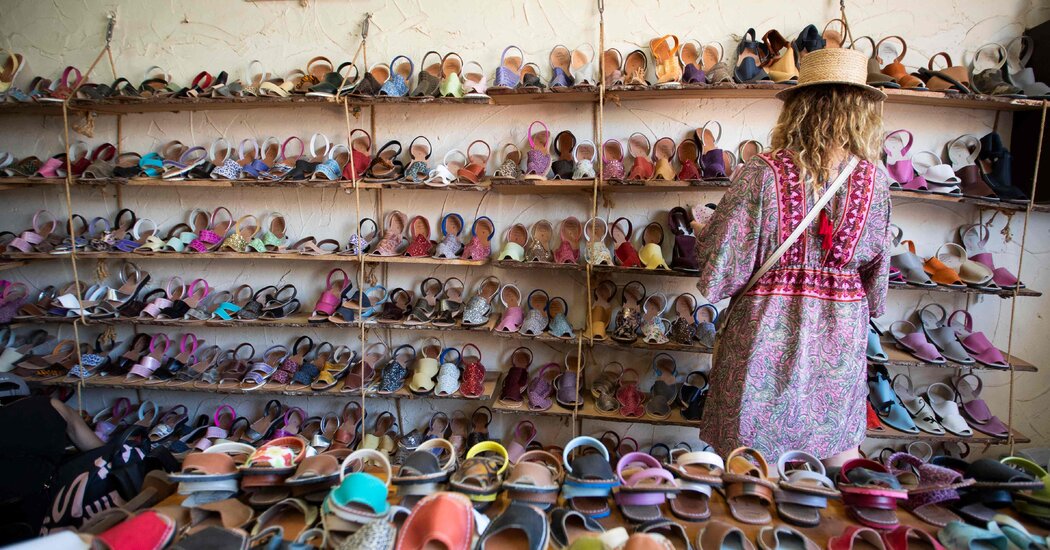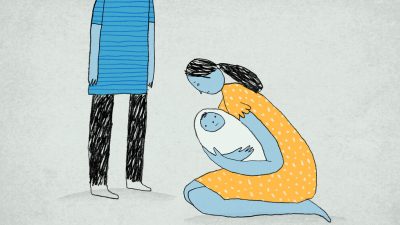Megayachts wrestling for space in the French fishing port of St.-Tropez would find size to be of little concern in Mahón, on the Spanish island of Minorca.
Six kilometers (3.7 miles) long and as much as 30 meters (98 feet) deep, Mahón’s port is one of the world’s largest and deepest natural harbors. Captured by the British in 1708, it became a crucial military base during almost a century of occupation of the island (which, along with Ibiza, Mallorca and Formentera, compose the Balearic Islands in the Mediterranean, off Spain’s eastern coast).
On Minorca, military history is hard to miss. Its landscape is dotted with castles, defensive forts, storage towers and Georgian-era townhouses.
Now, the remains of that military past, along with some old aristocratic palaces and derelict farmhouses, are being repurposed into luxuriously rustic hotels, private estates and even a world-class art center, all of which are turning this island of almost 700 square kilometers (270 square miles) and about 104,000 residents into a destination for travelers seeking tranquillity and star-studded skies.
Try Mahón’s port after 10 p.m. in the summer — the megayachts are dark, and the restaurants are closing.
“This is the land of understatement,” Laurent Morel-Ruymen, a French hotelier, said in a phone interview from his home in Neuilly-sur-Seine, a suburb of Paris. “If Monaco is the temple of Ferraris, then Minorca is home to the beat-up, rusty Land Rover. But its owner could buy half the island.”
As for its visitors, “people travel to Minorca because they seek earthly values,” he said. “You will find many artists, sculptors and a few discreet captains of industry.”
It was love at first sight for Mr. Morel-Ruymen in 2012 when he first arrived on Minorca by sailboat. “I came here to restore beautiful old buildings,” he said. On May 17, his company, Mare e Terra, is scheduled to open Cap Menorca, its second hotel on the island.
The 15-suite hotel stands on a cliff overlooking the sea and the hideaway beach of Cala Llucalari, part of a sprawling 30-hectare (74-acre) site, a former Spanish military base near the town of Alaior, about 10 miles northwest of Mahón. Each suite has its own seawater pool, a rarity on the island, where environmental protections and the lack of wastewater treatment have made pool permits hard to obtain.
“Two years for the construction, but a decade to get the permits,” Mr. Morel-Ruymen said.
If a resident’s rusty Land Rover has a flat, then horseback may be an option: The indigenous horse breed called Cavall Menorquí still trots along the Camí de Cavalls, a 185-kilometer trail that circles the island. Incidentally, that is the best route to discover the island’s hidden coves and to see some of its 1,600 stone megaliths, some dating from about 1600 B.C., which were added to the UNESCO World Heritage list in 2023.
“You can’t build anything new on Minorca, and you certainly can’t build on the beachfront,” said Sebastien Styger, vice president of sales and marketing for Vestige Collection, a Spanish property development company.
Vestige Collection has been renovating two farmhouses, planning to add them to its Minorca portfolio. That already includes Son Vell, an 18th-century manor, and Santa Ana, expected to open by mid-May, a private villa that can be staffed with a personal chef, nanny and Pilates instructor.
The Argentine architect Luis Laplace also has been restoring a home on Minorca. “For me,” he said during a phone interview from Paris, where he lives and works, “this island is heaven.”
“Flip-flops and a straw hat, and you are done,” he noted. “For years, there was only one decent shop in Mahón and at parties you’d see the men all wearing the same linen pants from that shop. Now things have changed. But you still won’t find Hermès there.”
“This was never a rich island,” he said. “The local shoe and jewelry industries have disappeared. Now you have tourism but at a slow pace.”
Mr. Laplace has experience with Minorcan renovations. He was the architect who transformed the derelict military barracks on Isla del Rey, an islet in Mahón harbor, into a 16,000-square-foot art center for the international art gallery Hauser & Wirth.
“The local council wants to be ecological, but it cannot reconcile ideal and reality,” he said. “You need patience to get anything done.”
Since the art center opened in 2021, it has drawn about 180,000 visitors — the same kind of “Bilbao effect” that the 1997 opening of the Guggenheim had on that Spanish port.
“I believe our impact on the island is positive,” the art center’s director, Mar Rescalvo Pons, said in a phone interview from Mahón, “in the way that the project is aligned with Minorcan values: sustainable development, creating synergies with the local community, heritage conservation.”
Rashid Johnson, one of Hauser & Wirth’s star artists, now owns a home on the island, as do the gallery’s Swiss owners, Iwan and Manuela Wirth. Other members of the island’s creative community include the French Algerian artist Adel Abdessemed, the Spanish choreographer and film director Blanca Li, and the Spanish artist Secundino Hernández.
A hot ticket for global art nomads this spring is an invitation to Hauser & Wirth’s opening event May 11 for two shows, one dedicated to the American artist Roni Horn and the other to works by the Spanish artist Eduardo Chillida, who died in 2002.
“Minorca is becoming a contemporary art destination,” Ms. Rescalvo Pons said. “We expect people to stop here on their way from the Venice Biennale to Art Basel.”
Come for the art, but stay for the food: Cantina, the center’s outdoor restaurant, serves local fare under the shade of olive trees. Its menu often includes vermella menorquina beef, from a local breed of cattle; shellfish from Mahón; and lavender lemonade or the popular pomada cocktail, featuring Xoriguer gin, distilled in Mahón, with lemon juice and crushed ice.
May is a good time to visit. The island is just springing back to life from a seasonal slumber that runs from November through April.
“In Minorca, you have pristine nature, great culture, plus it’s off the beaten track,” Mr. Styger said. “It is a mix for a magical island.”
Sumber: www.nytimes.com












